#Aston Martin V8 Lagonda
Text
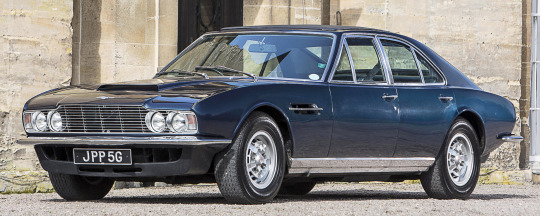
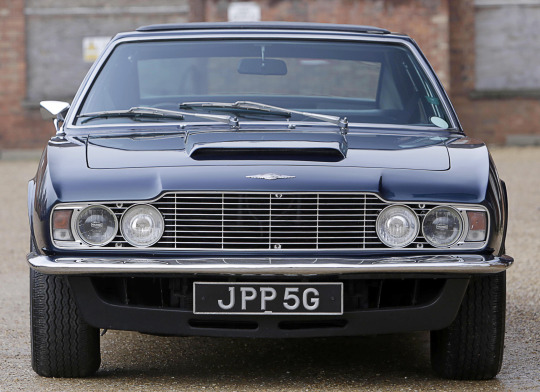


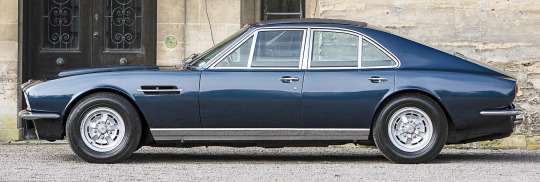
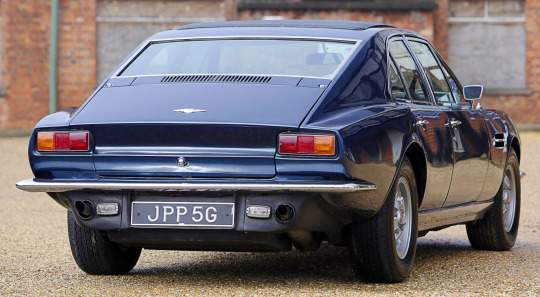
Aston Martin MP230 V8 Lagonda Prototype, 1969. When William Towns designed the DBS, he simultaneously worked on both a 2-door and 4-door versions of the same car. The prototype was built as a luxury saloon for the personal use of Aston Martin owner and CEO Sir David Brown. Originally fitted with a prototype 5 litre V8 engine and wire wheels, GKN Alloy wheels (pictured) and a production 5.3 litre V8 were fitted later. The "series production" version of the car was not offered for sale until 1974 and only 7 were made
#Aston Martin#Aston Martin V8 Lagonda#prototype#William Towns#luxury saloon#sports saloon#V8#1969#Aston Martin DBS#Sir David Brown#Lagonda
188 notes
·
View notes
Text
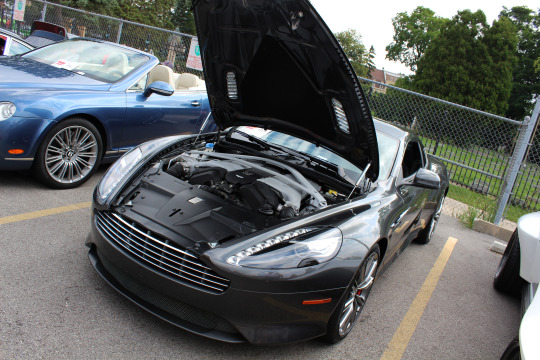
Aston Martin DB9 at Cruisn' The Grove (2023) in Elm Grove, WI.
#stance#stanced#aston martin#aston#martin#db9#db2#db4#db5#db6#db7#db11#db9 roadster#db12#rapide#one-77#lagonda#vantage#v12 vantage#v8 vantage#v12 vantage s#vantage roadster#vantage gt#vantage s#db9 gt#vantage volante#db9 volante#v12#v8
12 notes
·
View notes
Text
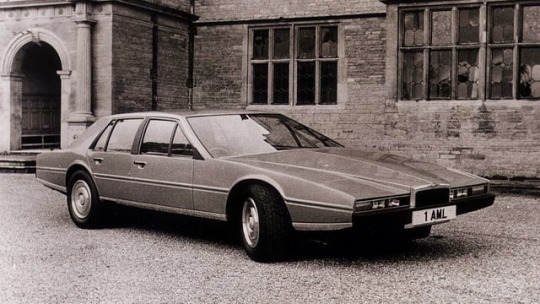
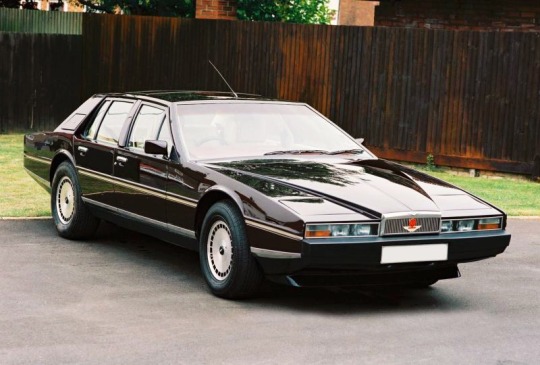

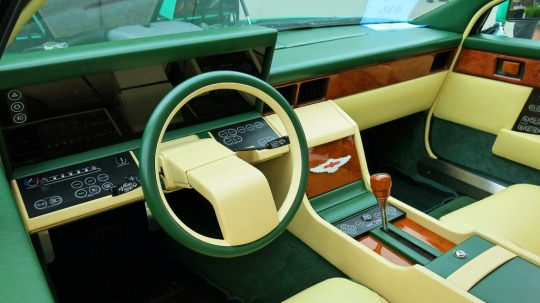

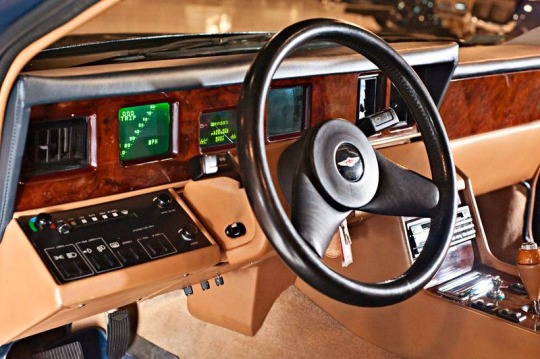
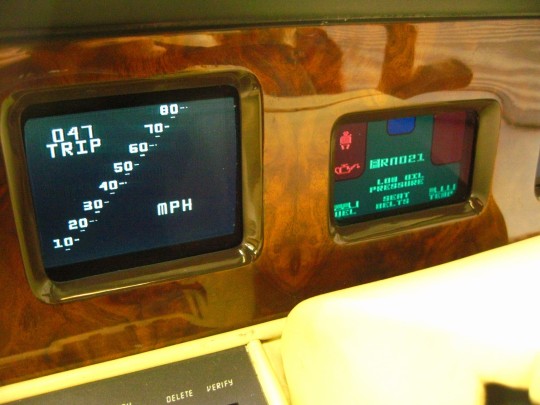
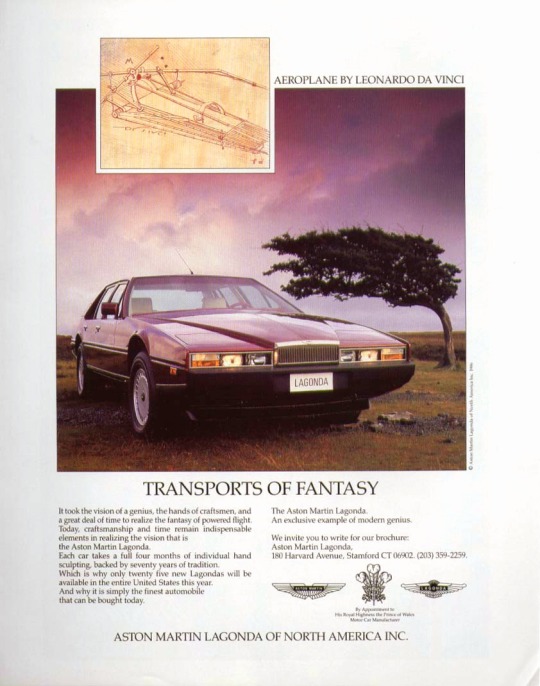


🇬🇧 Embark on a journey through the illustrious lineage of the Aston Martin Lagonda, spanning from 1976 to 1990, a testament to automotive luxury and innovation!
👑 Founded in 1913, Aston Martin has become synonymous with luxury, English elegance, and high-performance automobiles. In the early 1970s, it continued to push the boundaries of automotive design and engineering.
🚘 The Aston Martin Lagonda lineup of the late 1970s and 1980s exemplified the pinnacle of luxury automobiles, featuring sleek and sophisticated designs that set new standards for elegance and refinement.
🛞 Beneath their refined exteriors, the Lagonda boasted powerful V8 engines, delivering exhilarating performance and effortless cruising. Their spacious and sumptuously appointed interiors were outfitted with the latest amenities, including plush leather upholstery and polished wood trim.
💡 The Lagonda was known for its innovative use of electronic systems, including digital dashboard displays, onboard computers, and advanced climate control systems, setting new benchmarks for automotive technology and innovation.
💔 Despite critical acclaim and a loyal following, production of the Aston Martin Lagonda ultimately ceased in 1990. One of the key factors contributing to the discontinuation of the Lagonda series was the high cost of production and limited demand in the luxury car market.
#brits and yanks on wheels#transatlantic torque#retro cars#vehicle#cars#old cars#brands#companies#automobile#american cars#aston martin#aston martin lagonda#lagonda#old car#cool cars#classic cars#car#english cars#made in uk#made in england#luxury car#luxury cars#luxurycars#luxury#innovation#innovative#innovators#electronic#electronics#v8 engine
59 notes
·
View notes
Photo
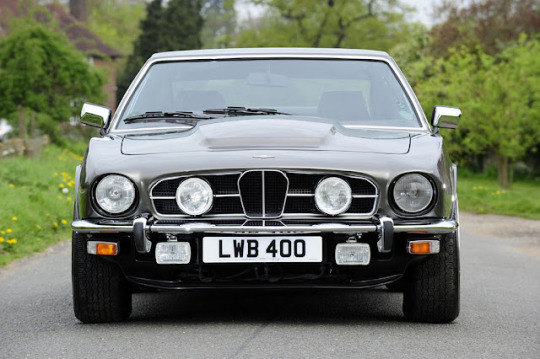



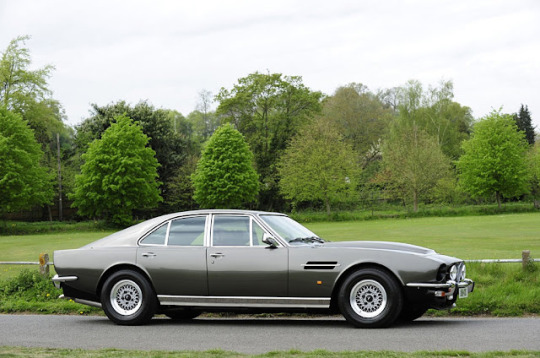

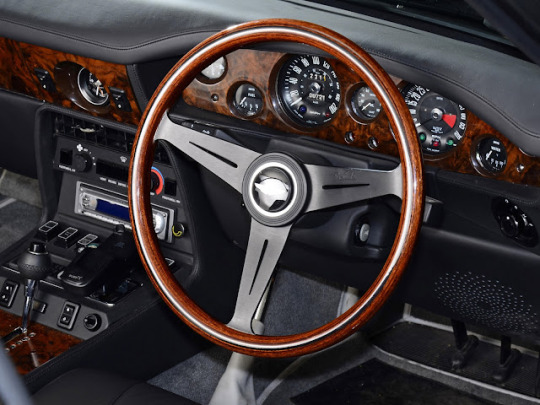

Aston Martin Lagonda (Series 1)
The Lagonda brand had been dormant for a decade when Aston Martin revived it in 1974 as the model name for a new sensational four-door saloon based on the existing two-door V8. A prototype (‘MP/230/1’) had been used by AML chairman David Brown in 1969 but the project would not come to fruition until after his departure and Aston Martin’s acquisition by Company Developments. Launched at the London Motor Show in October 1974, the new Lagonda was 305mm (12”) longer in the wheelbase than the two-door V8 whose engine and running gear it shared and to which it bore an understandably strong resemblance. An exclusive model even by Aston Martin standards, it was catalogued until June 1976, by which time a mere seven had been made. Chassis numbers ranged from ‘12001’ to ‘12007’, while a further example - chassis ‘12008’ - was built independently at a later date. Of the seven factory cars built in period, only two were completed with the ZF five-speed manual gearbox.
Already a powerful car, the Lagonda has been endowed with even greater urge courtesy of an R S Williams 7-litre conversion, enabling it to more than hold its own when pitted against modern rivals. The Williams conversion places particular emphasis on torque, producing a substantial 550lb/ft and useful 480bhp against the estimated 350lb/ft and 320bhp of the 5.3-litre original, increases that more than offset the weight gain associated with all the Lagonda’s extra equipment. This in turn necessitated up-rating the Chrysler Torqueflite automatic transmission, which has replaced the original ZF manual ’box, and strengthening the differential mountings to prevent twisting under load. Engine cooling has been improved by increasing water flow around the engine and paying special attention to under-bonnet ducting.
Add to that levels of ride, handling and general comfort which will be more than acceptable to all who might conduct business within, and you have a prestige car that makes a subtle but singularly significant statement.’
62 notes
·
View notes
Video
1987 Aston Martin V8 Vantage Volante - Grand Basel 2018 by Ank Kumar
Via Flickr:
1987 Aston Martin V8 Vantage Volante- Grand Basel 2018
#Aston Martin Lagonda#Aston#art#art basel#motor show#auto show#concours#salon#design#luxury#lagonda#amr#travel#photography#city#explore#Europe#v8#Computershare#equatex#lifeatinfy#infydiaries#infy#Ank Kumar#Kumar#Ank#automotive#automobile#auto#carspotting
2 notes
·
View notes
Photo

26 notes
·
View notes
Text
News: Q BY ASTON MARTIN: ‘DBS 59’ MARKS LEGENDARY 1959 LE MANS WIN
News: Q BY ASTON MARTIN: ‘DBS 59’ MARKS LEGENDARY 1959 LE MANS WIN
No need to explain why, we’re just putting this out there. Thanks to our friends at Aston for sharing this one. Enjoy:
One of the greatest moments in Aston Martin Lagonda’s (AML) illustrious motorsport history is the inspiration for the latest Q by Aston Martin: Commission; the ‘DBS 59’.
Inspired by Aston Martin’s historic 1-2 finish in the 1959 24 Hours of Le Mans with its iconic DBR1, Aston…
View On WordPress
#1959 24 Hours of Le Mans#AML#Aston#Aston Martin#Aston Martin Lagonda#David Brown Racing Aston Martin#DBR1#DBS 59#Le Mans#Q by Aston Martin#V8 Vantage GTE
1 note
·
View note
Photo

The new Vantage !!
#aston martin#vantage#newvantage#v8 supercars#v8#aston martin lagonda#supercar#supercar lifestyle#amazingcarsdaily#amazingcars247#luxury
363 notes
·
View notes
Text
#in Rapide#Luxury Cars Vehicle#Aston Martin Lagonda Limited#Aston Martin Car Models#Aston Martin Bond Car#Aston Martin Used Cars#2015 Luxury Cars#Mansory Aston Martin#Exotic Sports Cars Vehicle#Aston Martin Most Expensive Car#Aston Martin Sedan#Aston Martin Vanquish Cost#Aston Martin Lagonda 2016#Aston Martin V8#2018 Aston Martin Rapide#Aston Martin White Cars#Aston Martin V12 Vantage#Aston Martin DBS V12#Aston Martin Electric Car#Aston Martin AMV10#Aston Martin V8 Vantage Roadster#Black Aston Martin Rapide#Aston Martin India#First Aston Martin Car#Aston Martin Auto#Aston Martin DBS 2019
0 notes
Photo



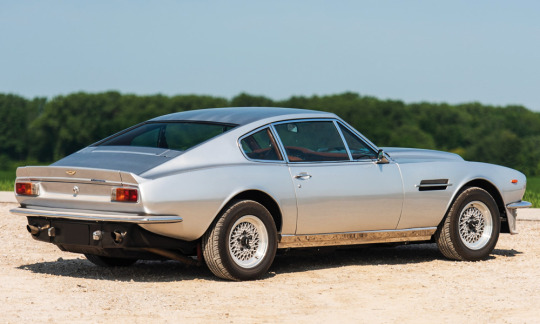
Aston Martin V8 Vantage
The Aston Martin V8 Vantage is a British grand tourer, a higher performance version of the Aston Martin V8. It was hailed at its 1977 introduction as "Britain's First Supercar" (sometimes nicknamed "British muscle car") for its 170 mph (270 km/h) top speed. Its engine was shared with the Lagonda, but it used high-performance camshafts, increased compression ratio, larger inlet valves and bigger carburettors mounted on new manifolds for increased output. Straight-line performance was the best of the day, with acceleration from 0–60 mph (97 km/h) in 5.3 seconds, one-tenth of a second quicker than the Ferrari Daytona.
193 notes
·
View notes
Photo
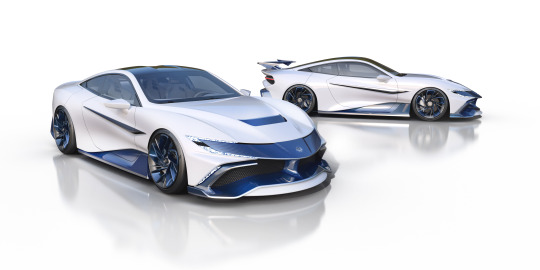
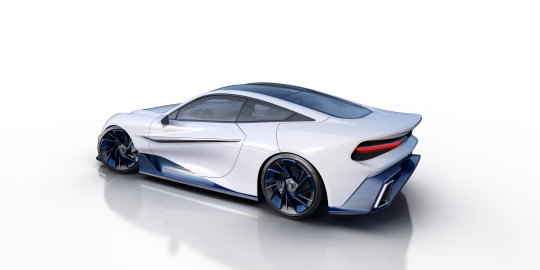
Naran Automotive Reveals Celare Pack for Debut Hyper Coupe
Naran Automotive, the new manufacturer of luxury ultra-high performance cars, has revealed a unique ‘Celare Pack’ for its debut model – The Naran.
The ‘Celare Pack’ highlights the duality of The Naran: an aggressive on track weapon as well as an object of beauty. It allows customers to tailor the four-seater hyper-coupé to meet their individual needs, whether they prefer pushing the limits on the track or a more understated and elegant aesthetic on public roads.
The innovative option – its name derived from the Latin for “to conceal or hide” – is inspired by the adjustable systems used in motorsport, includes the removal of the rear wing, adjustments to the front-end aerodynamic setup with airflow disrupters and a change of tires.
Within 20 minutes the aerodynamic package can be installed or removed by Naran Automotive engineers, switching The Naran between road-legal GT3 race car and a piece of art. Owners will receive a carbon wing cradle to mount the wing when not in use.
The Naran, an all-wheel-drive, front mid-engined hyper-coupé, is capable of producing an industry-leading 1,377kg of downforce, exceeding that of a GT3 race car. The Naran will accelerate from 0-60mph in less than 2.3 seconds, and 0-100mph in 4.56 seconds, with an expected top speed of over 230mph.
Naran Automotive has worked with technical partner EY3 Engineering, led by motorsport specialist Daniel Mense, to optimize whole vehicle aerodynamics to deliver this focused performance without compromising the monolithic design language and unmistakable coupé silhouette of The Naran.
The world class team has developed unique, hidden solutions to deliver a perfectly balanced vehicle, including motorsport-inspired carbon composite bargeboards, which are attached directly to the front wishbone to help smooth airflow from the front wheels. A full flat floor and split-rear diffuser delivers critical airflow to energize the rear wing, while the front splitter directs flow under the car feeding the front diffusers to generate all front downforce. The cooling channels above feed the brake discs, engine intake and cooling pack, with the latter exiting through the bonnet to increase downforce and reduce drag.
Alongside EY3 Engineering, Naran Automotive has assembled a team of world-class partners from the pinnacle of automotive design, motorsport, material innovation and powertrain development to create The Naran.
Jowyn Wong, founder of Wyn Design and visionary behind the Apollo IE and De Tomaso P72, is leading the design, while color and materials design is being tailored by Kate Montgomery, former Aston Martin Lagonda designer. The bespoke 5.0-litre twin-turbo V8 engine, which produces 1,048 bhp and 1,036Nm of torque, is being crafted in Germany with partners Racing Dynamics.
Just 49 examples of The Naran will be created, with each vehicle individually tailored to the personal taste of the collector, including the designation of a bespoke model name – a convention normally reserved for luxury superyachts.
The Naran will debut in early 2021
50 notes
·
View notes
Text
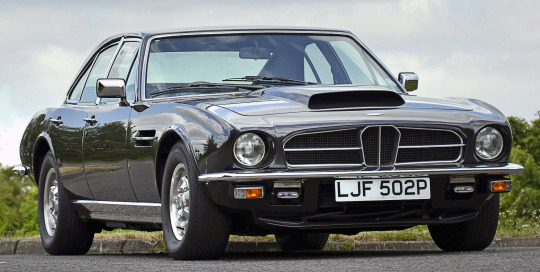

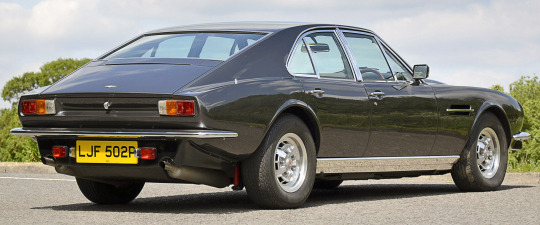
Aston Martin Lagonda V8 Saloon, 1974. The production version of the William Towns designed Lagonda received the new nose from the AM V8 Coupé that had had replace the DBS and DBS V8. Launched in the teeth the 70s fuel crisis only 7 were sold
#Aston Martin Lagonda#Aston Martin Lagonda V8 Saloon#Aston Martin#luxury saloon#sports saloon#V8#1974#1970s
232 notes
·
View notes
Photo

Aston Martin Vantage at Waukesha Cars & Coffee (2023) - Meet 1 in Waukesha, WI.
#stance#stanced#aston martin#vantage#v8#v8 vantage#v12#v12 vantage#dbs#db4#db5#db7#db7 vantage#db9#db9 roadster#vantage roadster#db11#valkryie#vallhalla#lagonda#dbx#one-77#cc100#cygnet#virage#rapide#zagato#dbs volante#db7 vantage volante
5 notes
·
View notes
Photo

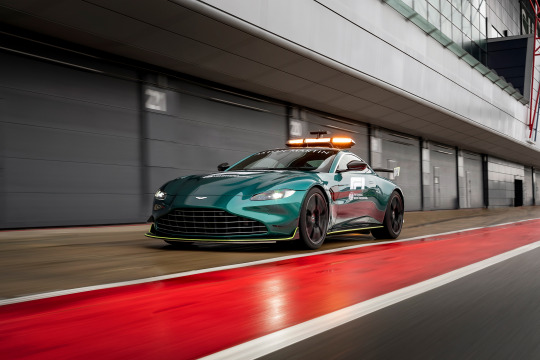
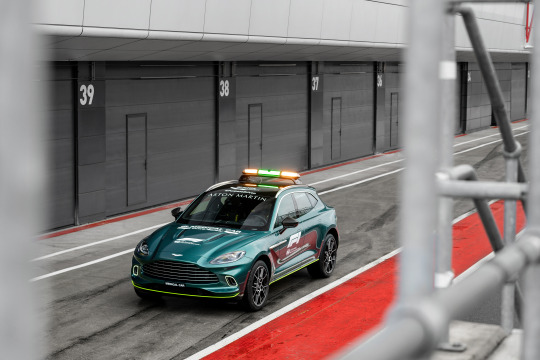
Aston Martin Reveals F1 Safety & Medical Cars
When Aston Martin makes its return to the FIA Formula One World Championship at the end of this month, it will be with more than two grand prix contenders on the Formula 1 Gulf Air Bahrain Grand Prix 2021 grid: For the first time in the history of the sport the Official Safety and Medical cars of Formula 1 will also bear the famous wings of the British luxury brand.
A specially equipped version of the Aston Martin Vantage has been developed for the critical role of intervening and controlling the pace of an event involving the fastest racing cars in the world. Engineered by an experienced team at Aston Martin’s Headquarters in Gaydon, the car benefits from significant chassis and aerodynamic improvements. With only a few additional modifications to make it FIA compliant, the new safety car is the pinnacle of Vantage performance.
Aston Martin DBX, the brand’s critically acclaimed first SUV, will also take on the role of an Official Medical Car of Formula 1, showcasing its own power and handling prowess as it launches into action to support in the event of an emergency.
Aston Martin Vantage – An Official Safety Car of Formula 1
Piloted by FIA’s appointed driver, Bernd Mayländer (DE) who has been at the helm of the F1 safety car for over twenty years, the Aston Martin will remain on standby in the pit lane throughout the race.
When deployed by Race Control in the event of bad weather or an accident, the former race driver and co-driver, Richard Darker (UK) will take to the track at the head of the field to safely control the pace of the pack, neutralizing the event and allowing any incident to be managed safely by the circuit’s officials.
F1 tire temperatures can drop when the cars are running at sub-optimal speeds, therefore fast lap times are essential for the Official Safety Car of Formula 1. This responsibility led the Aston Martin Lagonda CEO, Tobias Moers to task the engineering team with enhancing the already sporting Vantage, focusing on improved track performance and lap times.
The results? Power has increased by 25PS to 535PS, delivered by a 4.0-litre twin-turbo V8 delivering significant performance capability going from 0-60mph in just 3.5 seconds. 685Nm of peak torque remains the same but is now sustained for longer, and with additional work on the transmission means the driver has a better sense of directness, precision, and control through upshifts and downshifts. The Vaned grille coupled with a new front splitter creates 155.6kg of downforce at 200km/h; more than 60kg than the production Vantage produces at the same speed. Modifications to the suspension, steering and dampers have also been undertaken, with further detailed underbody bracing modifications to increase front structural stiffness. All this, together with a comprehensive aero kit and a switch to lower profile tires, the Aston Martin Vantage Official F1 Safety Car has all the credentials to handle a Formula 1 circuit.
Aston Martin is known worldwide for its high-profile successes in sports car racing, most recently last year’s multi-class victory at the 24 Hours of Le Mans that contributed to becoming FIA GT World Endurance Manufacturers’ Champions. Engineering developments derived from these successes have aided the systems that feature in the F1 safety car. The unique requirements of the safety car mean the vehicle must be capable of going from top speeds, back to idling in the pit lane without so much as a cool-down lap, so a reliable and robust thermal management system is a key element to its performance. Having already developed a cooling system that proved effective in extreme conditions and temperatures on the multiple championship-winning Vantage GT4 race car, Aston Martin transferred this technology into the safety car, along with the addition of extra vents in the bonnet to support further cooling.
As it performs on standard Pirelli road tires, the safety car is also equipped with the same carbon-ceramic brakes found on the production Vantage, with additional brake ducts hidden within the front grille to aid cooling.
The safety car mimics the Aston Martin Cognizant Formula One Team car with an all-new paint color, 2021 Aston Martin Racing Green, which was developed specifically to celebrate the marques return to Formula 1 racing after more than 60 years. A Lime Essence pinstripe highlights the front splitter; a color synonymous with Aston Martin’s successful racing pedigree, and most recently used on the ultra-successful Vantage that competed in the FIA World Endurance Championship (WEC). The F1® safety car is otherwise distinguished by its prominent FIA safety car livery, bodyside mounted radio antennas, an LED rear number plate and a bespoke, roof-mounted LED light-bar, developed by Aston Martin.
The light-bar sits on a carbon fiber plinth, raised above the roof line. The aerodynamic profile is designed to offer the least possible resistance while providing an optimized flow of air towards the exaggerated rear wing. Bright orange lights on the outer edges of the light-bar illuminate when the Official Safety Car of Formula 1 joins the track. A centrally positioned amber flashing light then illuminates once the safety car is in position ahead of the race leader - indicating that no one should overtake; two centrally positioned green lights are illuminated once it is safe for the F1® cars to pass. The headlamps and taillamps also flash to aid the safe deployment of the car. The rear number plate displays ‘Safety Car’ illuminated by LED’s, making it clear to see from vehicles behind in all weather conditions. A rear facing camera is also fixed to the light-bar that feeds a live image into a second rear-view mirror located inside the cabin, allowing the co-driver to monitor any activity at the rear.
Further, inside the cabin the production seats have been replaced by FIA-approved racing seats equipped with a 6-point safety harness, the same as those found in the F1 team cars. Two screens are mounted on the dashboard, providing the driver and co-driver with a live television feed and a variety of customizable information displays, including live lap timing and the track positioning of all active race cars. The center console has been modified significantly. The rotary dial has been moved back to where the cup holder was positioned, and in its place sits a switch control system used to execute a number of actions, including activating the siren, radio communications and controlling the light-bar LED’s. The ‘Marshalling System’ is integrated into the instrument cluster and the dashboard, allowing both the driver and co-driver to see which color flag is being shown on the track, by the illumination of the same colored LED light; mirroring the system that also features by regulation in all F1 team cars. TV cameras are also mounted on top of and inside the car, to provide live TV footage.
Aston Martin DBX - An Official Medical Car of Formula 1
Aston Martin DBX will also share the Official Medical Car of Formula 1 responsibilities this season, driven by Alan van der Merwe (41, South Africa). Like the safety car, the medical car is distinguishable by its 2021 Aston Martin Racing Green paint with Lime Green accents - as well as the prominent FIA medical car livery, LED rear number plate and roof-mounted LED light-bar which sits upon the roof rails.
Powered by the 4-litre, twin-turbo V8 engine, also found in DB11 and Vantage, DBX provides an impressive output of 550PS and 700NM of torque which launches DBX from 0 to 62mph in just 4.5 seconds, reaching a top speed of 181mph. All this ensures the FIA medical team can respond effectively to an emergency. With a sound that is unquestionably Aston Martin, the active exhaust system means DBX will not only be seen, but heard, as it does.
The Official Medical Car of Formula 1 is required to carry a substantial amount of equipment including a large medical bag, a defibrillator, two fire extinguishers and a burn kit - and the DBX is more than equipped with 632 liters of boot space.
Whilst the interior trim is fully representative of a customer vehicle, the central rear seat has been removed, and the remaining four have been replaced with sport bucket seats, each equipped with a 6-point safety harness. These provide seating for the driver, Alan van der Merwe and Dr. Ian Roberts - the FIA Formula 1® Medical Response Coordinator, as well as a Local Doctor, leaving one spare, in case an incident requires a racing driver to be driven back to the pit lane. Much like the safety car, two screens have been mounted onto the dashboard to provide live race footage. An additional screen is used to read live biometric data delivered via technology in the drivers’ gloves, which in the event of an accident, provides critical information on their condition. The ‘Marshalling System’ and the rear-view mirror camera display have also been installed into the medical car.
The development of both these Official Safety Car of Formula 1 and Official Medical Car of Formula 1 was carried out by the engineering team at Aston Martin. Both vehicles have endured significant testing, which included high-speed durability assessments and aggressive circuit driving at the Aston Martin facility at Silverstone, totting up almost 15,000km collectively. The vehicles have also been tested in a dyno climate chamber to ensure they will perform in all race conditions.
Tobias Moers, Chief Executive Officer of Aston Martin Lagonda said "Together with the whole company, I am extremely proud of the Aston Martin brands return to Formula 1®, the pinnacle of motorsport for the first time in more than 60 years and represents the start of a significant new era for Aston Martin. To see our acclaimed Vantage, our most dynamic sports car, performing the role of the Official Safety Car of Formula 1 and our first SUV, DBX, operate as the Medical Car on Formula 1® circuits around the world is a proud moment for us all”.
Aston Martin fans will be able to see the Aston Martin Vantage Official Safety Car of Formula 1 in action for the first time during the three-day pre-season test at Bahrain on 12-14 March, and then again during the opening round of the FIA Formula One® World Championship, at the same venue two weeks later.
The Formula 1 Gulf Air Bahrain Grand Prix 2021 will be broadcast live on Sunday 28 March 2021 from 16:00 GMT.
8 notes
·
View notes
Photo

2200KO 1982 #Aston #Martin #Lagonda #V8 #Saloon if you like my pictures #please #followme #regspotter #classiccars #reg_spotter #luxurycars #petrolhead #numberplate #carspotting #exoticcars #car #classiccarsdaily #vintagecar #oldcar #youngtimer #oldtimer #supercar #cars https://www.instagram.com/regspotter/p/BvhWLYDF4t0/?utm_source=ig_tumblr_share&igshid=5k0dvy4u4qvi
#aston#martin#lagonda#v8#saloon#please#followme#regspotter#classiccars#reg_spotter#luxurycars#petrolhead#numberplate#carspotting#exoticcars#car#classiccarsdaily#vintagecar#oldcar#youngtimer#oldtimer#supercar#cars
0 notes
Video
Aston Martin DBX This SUV is a Game Changer for the out of date #urus #svr #bentayga #q8 @jacksons_isle_of_man 1st Batch Limited Edition “1913” #lambourghini #audi #bentley #astonmartin #wales #db11 #vantage #jacksonsim #lagonda #rapide #v12 #zagato #speedster #shootingbrake #1913 #century #suv #4wd #v8 #daimler #orders #deposits (at St Athan) https://www.instagram.com/p/B3ywUFTJSZV/?igshid=wqmsc2pjk3el
#urus#svr#bentayga#q8#lambourghini#audi#bentley#astonmartin#wales#db11#vantage#jacksonsim#lagonda#rapide#v12#zagato#speedster#shootingbrake#1913#century#suv#4wd#v8#daimler#orders#deposits
1 note
·
View note